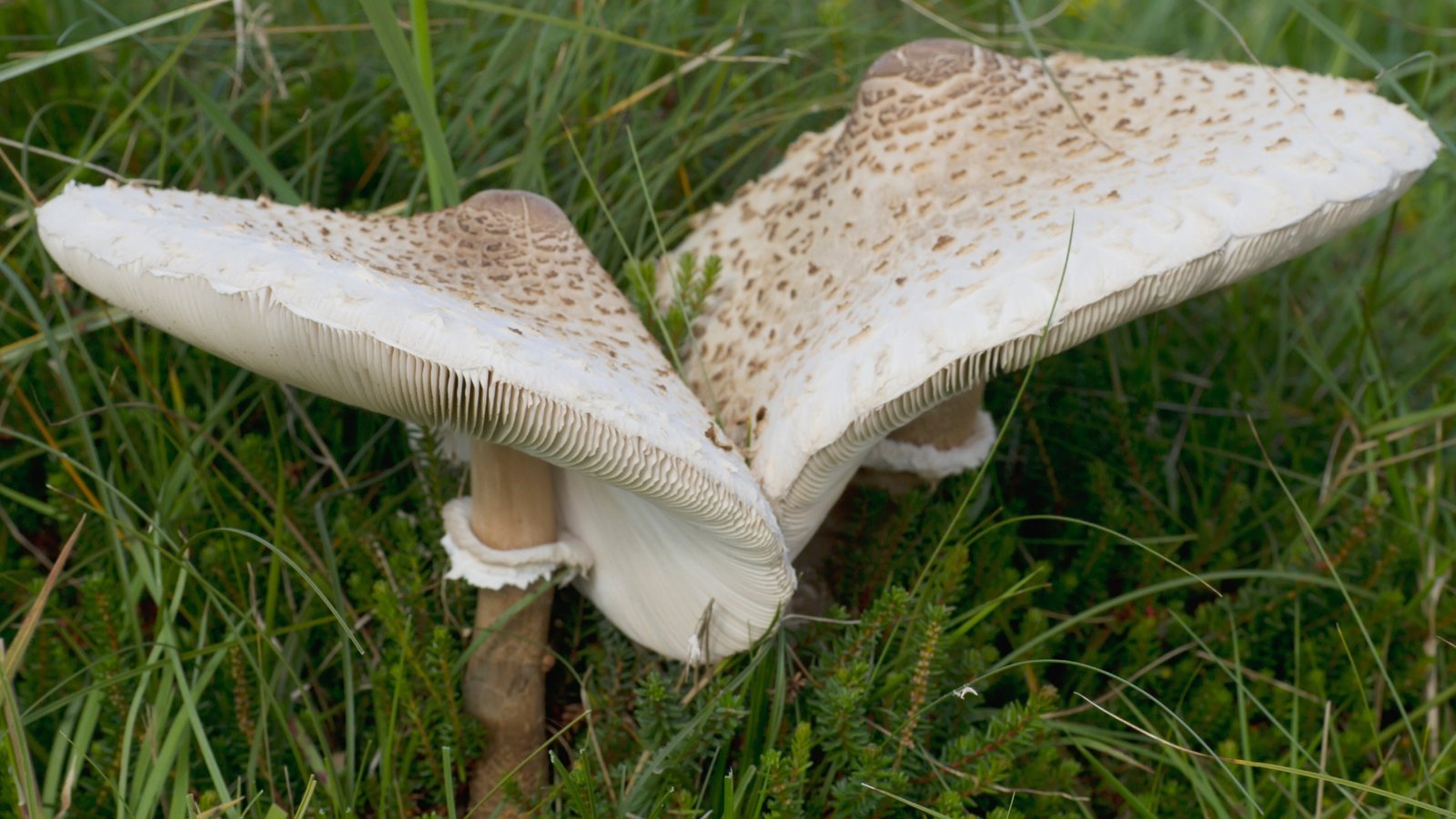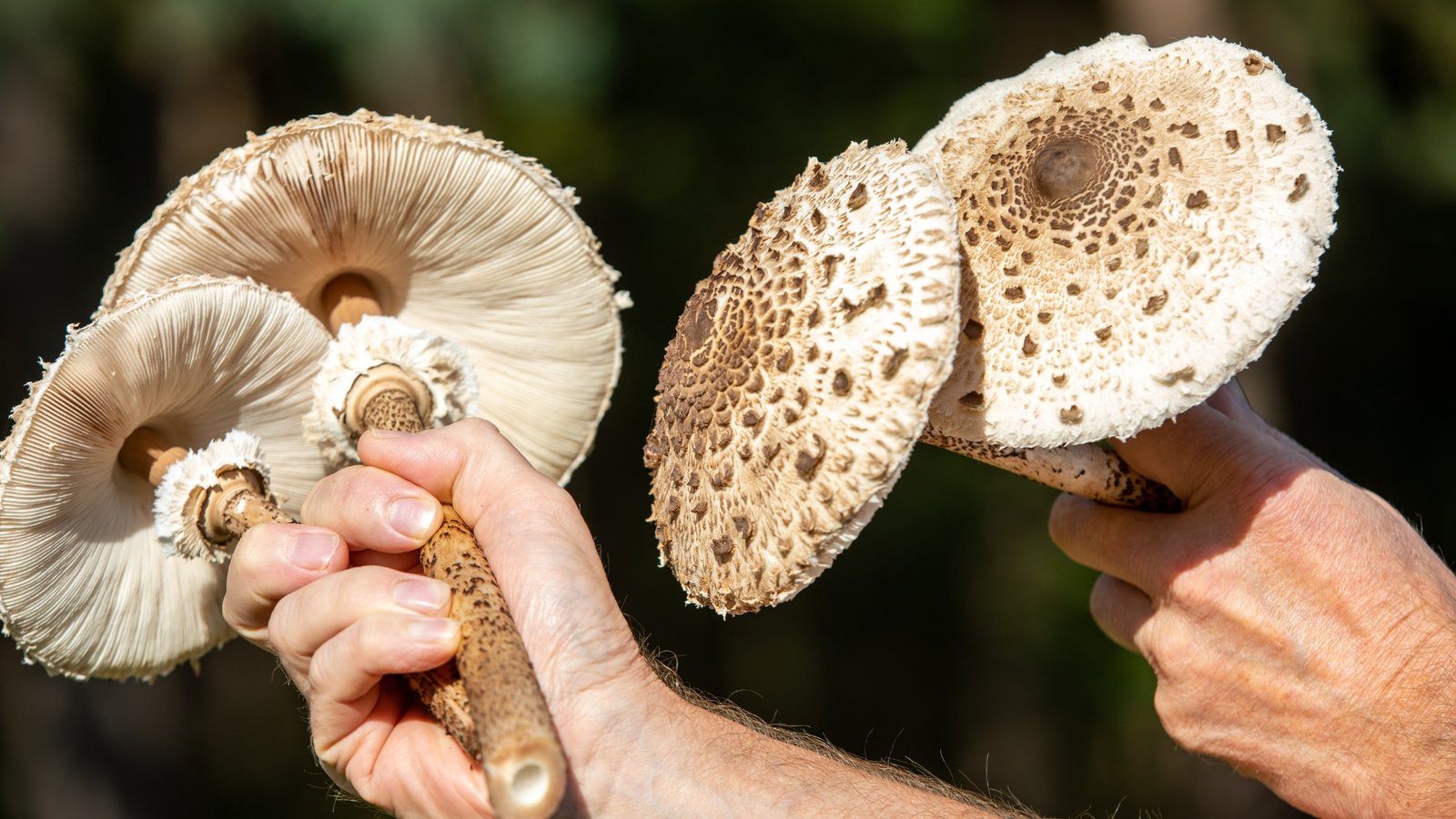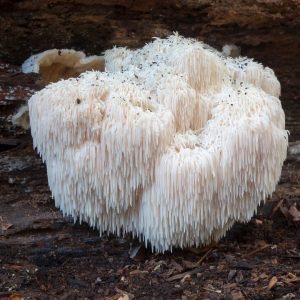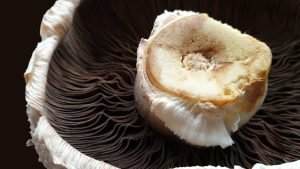In the vast and vibrant world of fungi, the Parasol Mushroom (Macrolepiota Procera) stands tall, both literally and metaphorically. This towering figure of the mushroom kingdom is not just a sight to behold but also a fascinating subject for ecological study and culinary exploration. With a hat that can span over a foot in diameter and a stipe that elevates it above the underbrush, the Parasol Mushroom is a gentle giant among its peers. This article embarks on a journey to uncover the ecological impact of Macrolepiota Procera and its revered place in gastronomy, blending scientific intrigue with the allure of gourmet delight.
Myco-Introduction:
The Parasol Mushroom, or Macrolepiota Procera, emerges as a sentinel of the underbrush, assuming a role far greater than its towering stature might suggest. Thriving in both deciduous and coniferous forests, this mushroom is a keystone species in its habitat, engaging in the silent yet vital task of decomposition. With a distinctive presence marked by its large, umbrella-like cap and elongated stem, the Parasol Mushroom is more than just a visual marvel; it is an ecological powerhouse.

The Guardian of the Undergrowth:
As a decomposer, Macrolepiota Procera plays a crucial role in nutrient cycling within forest ecosystems. By breaking down organic matter, including fallen leaves, dead trees, and other plant debris, it releases essential nutrients back into the soil. This process is fundamental to soil health, ensuring the continued growth and diversity of forest vegetation. The Parasol Mushroom’s ability to decompose lignin-rich materials is particularly noteworthy. Lignin, a complex organic polymer found in the cell walls of plants, is notoriously difficult to break down. Yet, the enzymes produced by this mushroom efficiently dismantle lignin, facilitating the decomposition process and enriching the soil with nutrients that are readily accessible to plants.

From Forest to Feast:
In the realm of wild mushrooms, the Parasol Mushroom, Macrolepiota Procera, is akin to a culinary gem, revered for its substantial size, meaty texture, and complex flavor profile that ranges from nutty to mildly sweet. This gastronomic treasure transforms any dish into a gourmet experience, making it a coveted ingredient among chefs and home cooks alike.
The versatility of the Parasol Mushroom is unparalleled. When young and tender, its caps can be prepared similarly to steaks, marinated and grilled to perfection, capturing the essence of outdoor cooking. As it matures, the mushroom’s texture and flavor deepen, lending itself beautifully to a variety of culinary creations. In savory stews and soups, it imparts a richness that enhances the base flavors, while in risottos, its meatiness provides a satisfying contrast to the creamy Arborio rice.
For a true celebration of its flavor, lightly battered and fried Parasol caps create an irresistible delicacy. The delicate crispiness of the batter complements the tender, flavorful flesh within, making for a dish that is both simple and profoundly satisfying. This preparation, often served with a wedge of lemon or a dollop of aioli, allows the natural flavors of the mushroom to shine through, offering a taste of the forest that is both elegant and earthy.
The universe of mushrooms is expansive, each variant bearing its own unique charm and characteristics. The Marketplace on the 🍄 Mushroom Network is a testament to this diversity. It is a haven for those seeking a deeper understanding of the magical world of mushrooms. If you’re keen on learning more about this type of mushroom and other mushroom variants, this Marketplace is your ultimate resource.
No posts found!
Woah there, eager beaver! 🦫 The 🍄 Mushroom Network’s Marketplace is a smorgasbord of mycological marvels, but it’s VIP access only! 🔐 Log In or Become a Myco-Patron (Yup, still FREE!) to see what all the fuss is about. Trust us, you’ll want in on these shroomy shenanigans! 🍄🎉

Forager’s Treasure:
The allure of the Parasol Mushroom extends beyond the kitchen, captivating the hearts of foragers who venture into the woods in search of these fungal giants. The late summer to autumn months marks the season when the Parasol Mushroom makes its grand appearance, dotting the forest floor with its impressive caps.
Foraging for Parasol Mushrooms is an adventure that rewards patience and respect for nature. Identifying them requires a keen eye; true Parasol Mushrooms feature a characteristic ring on their stem, a large, umbrella-like cap with a distinctive pattern, and a creamy white to brown color palette. However, caution is advised as there are look-alikes, such as the False Parasol, which can be toxic. Ensuring a correct identification is paramount, and consulting with experienced foragers or mycologists is recommended for those new to mushroom foraging.
Ethical foraging practices are essential to preserving the delicate balance of forest ecosystems. This includes taking only what you need, being mindful not to disturb the surrounding area, and leaving younger mushrooms to grow and spore.
Once harvested, preserving the flavor of Parasol Mushrooms for culinary use involves proper cleaning, slicing, and either cooking or freezing for later use. Drying is another excellent way to preserve their flavor, allowing these forest treasures to be enjoyed long after the foraging season has passed.
In every sense, the Parasol Mushroom is a forager’s treasure and a chef’s delight. From the thrill of the hunt in the great outdoors to the joy of culinary experimentation, Macrolepiota Procera embodies the essence of wild foraging and gourmet cooking, bridging the gap between the natural world and the culinary arts.
Not sure where to start? The 🍄 Mushroom Academy offers a wide range of courses tailored to your needs. Whether you’re a beginner eager to learn or an experienced mycologist looking to broaden your knowledge, the 🍄 Academy has something for everyone.

CLOSING HEADER HERE:
In conclusion, the Parasol Mushroom is a marvel of nature that bridges the worlds of ecology and gastronomy. Its significant ecological role and culinary potential invite us to explore and appreciate the complexity of the natural world. As we savor the delights of Macrolepiota Procera, let us also recognize and protect the ecosystems that nurture these magnificent fungi.
Love what you’re reading? Make it FBO (Facebook Official) with us! 🤘🏼 Hit that subscribe button on YouTube, follow our Facebook Page, join our FB Group – Wood Wide Web, and chirp along with us on Twitter/X. While you’re at it, peep into the 🍄 Mushroom Network’s Marketplace—where our Network shelves change faster than a Pink Oyster (Pleurotus Djamor) pins!
Recommended Reads:
Artist’s Conk/Bracket (Ganoderma Applanatum)
Greetings, mycology aficionados and natural art enthusiasts! Today, we’re delving into the fascinating world of...
Read More...Neurogenesis and Neurotropic Factors in Lion’s Mane Mushrooms
Delving into the intriguing world of mycology reveals yet another gem – the Lion’s Mane...
Read More...Unlocking the Potential of Agaricus Subrufescens: A Superfood in Your Backyard
Anticipating Almond Aroma: From your backyard to your kitchen, the Agaricus Subrufescens, colloquially known as...
Read More...The Remarkable Journey of Agaricus Bisporus: From Pasture to Plate
Dive into the captivating story of Agaricus Bisporus, more commonly known as the button, portobello,...
Read More...Whoa there, Spore Sport! 🍄 Looks like you’re not logged in yet. Don’t you know what you’re missing? MYCO-CREDITS! Imagine all the fungal fun you could have. It’s like finding a Morel in May and not picking it. Tragic, right? Log In or Become a Myco-Patron and start racking up those credits. It’s more rewarding than finding a mushroom in your backyard! 🌟🏡









